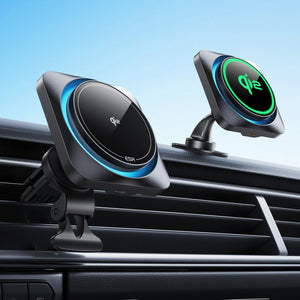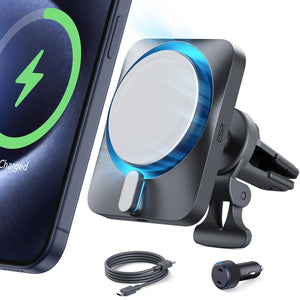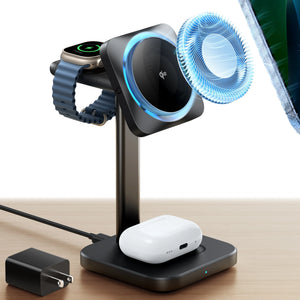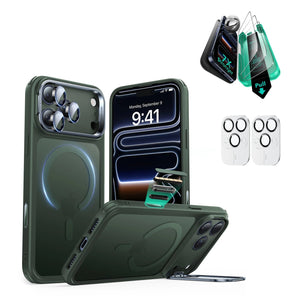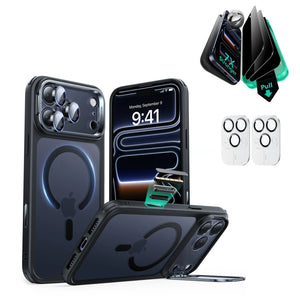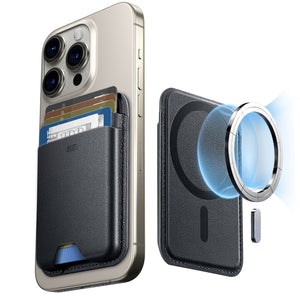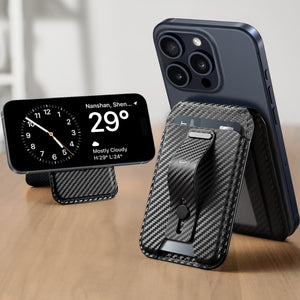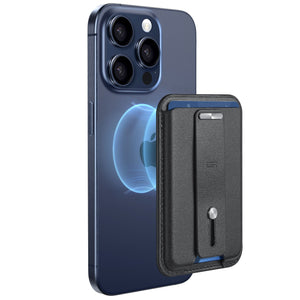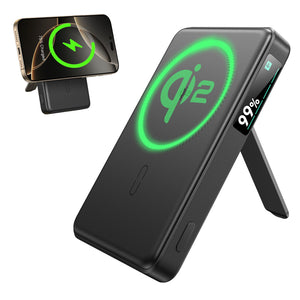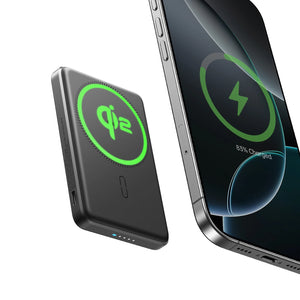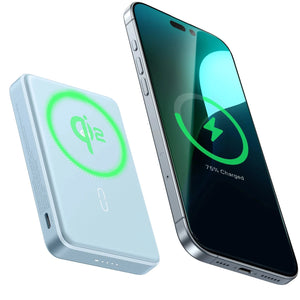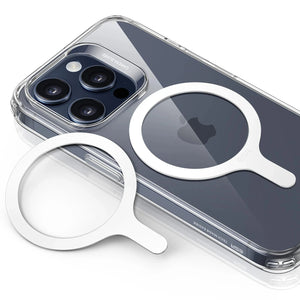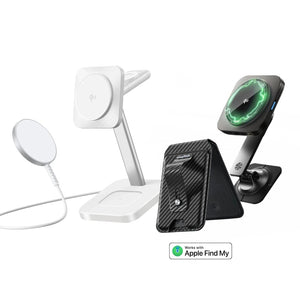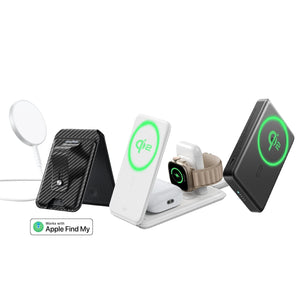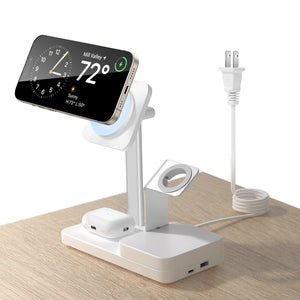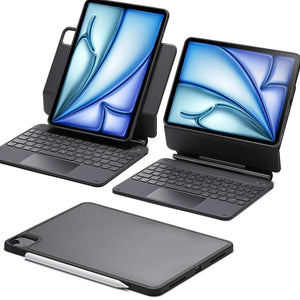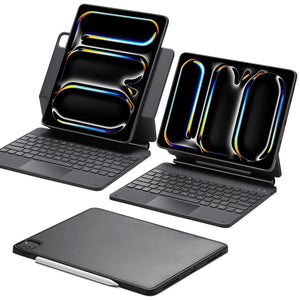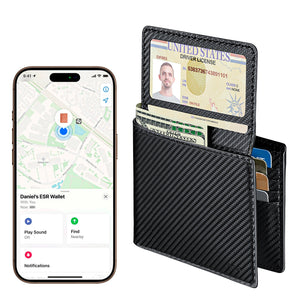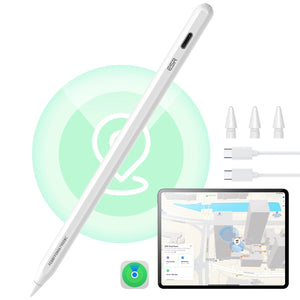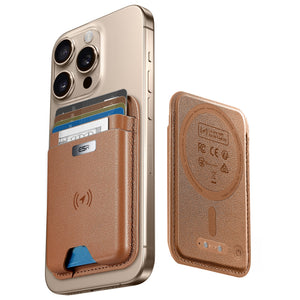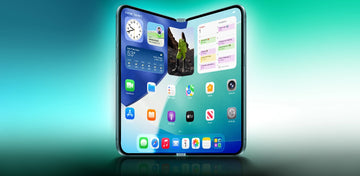The way people share contact information has evolved significantly in recent years. In the past, people would exchange business cards or spend time copying down phone numbers.
In 2023, Apple made it easier for people to share their contact information with the new NameDrop feature. With this new feature on iOS and watchOS, users can bring two Apple devices close together to exchange phone numbers and other contact details quickly. It's a convenient way to connect without typing everything out!
Android is planning to introduce a similar feature called "Gesture Exchange" or "Contact Exchange," which will allow users to share their contact information easily. This feature is expected to be available in 2025 or 2026.
While many articles emphasize similar features and technical aspects, this article explores how Android's approach may outperform Apple's NameDrop. It highlights Android's advantages in terms of flexibility, privacy, and a broader range of use options.
What is Apple's NameDrop and Where It Stands Today
Apple's NameDrop is an AirDrop extension that lets you quickly share contact info. It requires iOS 17.1+ or watchOS 10.1+ on compatible devices. It works offline via Bluetooth and Ultra-Wideband (UWB), a short-range positioning technology, emphasizing user confirmation and privacy controls. As straightforward and slick as it appears—with polished UI animations and seamless integration—it remains primarily used in social networking contexts, such as conferences and meetups. Ongoing challenges include users' awareness of the feature and the limitations of platform exclusivity.

Android's Gesture Exchange
Google's emerging Gesture Exchange is often seen as a mere imitation of NameDrop, but a closer examination reveals its unique aspects:
-
Broad Device Reach and Cross-Vendor Availability: Since it is built on Google Play Services—Google's universal update system—rather than on phone-specific software, the feature could potentially roll out to a vast array of Android devices—including budget models and non-flagship phones—giving it an edge in accessibility that Apple cannot match due to its handset-centric ecosystem.
-
Modular Implementation for Future Expansion: Early code hints suggest expanding beyond simple contact data to other media, such as photos or files, leveraging Android's existing Nearby Share infrastructure. This creates an extensible setup that can grow beyond contact sharing and support direct device-to-device transfers of other content, like Apple does with its AirDrop feature.
-
Custom Privacy Configurations: While Apple's system lets users choose which contact fields to share, Android's feature seems poised to offer even more granular controls, including "Receive Only" modes that allow users to receive without sharing their own data—a helpful option in professional contexts.
-
Gesture and UI Innovations: Though currently basic and in beta form, Google's expected rollout includes silent gestures and possibly more intuitive, subtle motion-based activations beyond simple device tapping—a UX direction that could redefine ease of use.
Android's Gesture Exchange is expected to provide more features than Apple's NameDrop, including capabilities similar to those of Apple's AirDrop.
Feature Comparison Summary
|
Feature |
iOS NameDrop |
Android Gesture Exchange |
Traditional AirDrop |
QR Code Sharing |
Samsung Quick Share |
|
Launch Year |
2023 |
Expected 2025-2026 |
2011 |
Various |
2018 |
|
Devices Supported |
iPhone, Apple Watch |
NFC-enabled Android phones |
Apple devices |
Universal |
Samsung devices |
|
Data Sharing Mechanism |
UWB + Bluetooth proximity |
NFC handshake + Bluetooth |
Bluetooth/Wi-Fi proximity |
Camera scan |
Wi-Fi/Bluetooth proximity |
|
Data Type |
Contact info (selective fields) |
Contact info (selective fields) |
Files/photos/contact info |
Contact info link or file |
Files, contacts, photos |
|
Privacy Controls |
Explicit user consent required |
Planned explicit consent |
Consent required |
Minimal post-scan control |
Explicit consent |
|
Cross-platform Support |
No |
Undetermined |
No |
Yes |
Limited |
|
Extensibility Potential |
Contact-sharing focus only |
Potential multi-media sharing |
Broad file sharing |
Limited |
Broad file + contact sharing |
Why Google's Approach Could Impact the Larger Ecosystem
This approach reflects a quintessential Android philosophy—flexibility, choice, and scale. By embedding the feature in Google Play Services, Android makes Gesture Exchange immediately available to hundreds of millions and allows it to be continuously updated without OS upgrades. This could foster an ecosystem where app developers integrate gesture-based contact sharing into third-party software, improving use cases deeply embedded in professional networking, events, and even online dating.
Furthermore, Google's plan to incorporate encrypted transfers, combined with required user approval, ensures that privacy remains a core part of the experience, potentially alleviating longstanding privacy concerns.
|
User Group |
Needs and Benefits from Gesture Exchange |
|
General Consumers |
Simplifies frequent social interactions by making contact sharing quick and intuitive without needing QR codes or typing. |
|
Business and Networking |
Enables rapid, privacy-conscious exchange at conferences and meetings, supporting selective sharing to maintain professionalism. |
|
Technologically Diverse Users |
Accommodates users with varying device qualities—from flagship to entry-level phones—ensuring consistent experience. |
|
Developers and OEMs |
Facilitates integration into third-party apps and manufacturer ROMs, encouraging ecosystem-wide adoption and innovation. |
|
Privacy-Conscious Individuals |
Privacy-centric sharing options empower users to control exactly what is shared, safeguarding sensitive data. |
The Cross-Platform Sharing Challenge: A Vital Missing Piece
One overlooked nuance in the NameDrop and Gesture Exchange narrative is the absence of cross-platform interoperability. Both Apple's and Android's sharing features are currently designed for their own ecosystems and do not seamlessly transfer contact info between iOS and Android devices. This limits the usefulness of these otherwise elegant solutions in the increasingly diverse mobile landscape where iOS and Android coexist.
While the current sharing features are limited to their respective ecosystems, the potential for a universal protocol for contact exchange is a tantalizing prospect. The absence of a concrete roadmap leaves room for innovation, partnerships, or possibly a new universal standard. This could potentially transform the mobile landscape, making contact sharing more seamless and universal.
Looking Ahead: A Future of Contact Sharing That's Invisible Yet Invaluable
As NameDrop addressed a specific need, Gesture Exchange is poised to push the boundaries further. By leveraging Android's fragmentation as a strength, it offers flexibility, wider reach, and customizable user control. This could potentially influence even Apple to reconsider its approach, opening up a world of possibilities for contact sharing.
Imagine a scenario where sharing contact info, business cards, or even event access credentials happens automatically, invisibly, and securely whenever two compatible devices are near each other. The road ahead is ripe for reimagining such exchanges—not just as convenience features but as integral aspects of identity management, trust building, and real-world social interaction.
Conclusion
Apple's NameDrop ingeniously simplifies contact sharing, but Android's emerging Gesture Exchange could transform the concept by emphasizing accessibility, extensibility, and customizable privacy controls. Instead of just copying Apple, Android's feature might change how billions of users connect and share information, making it smoother, safer, and more compatible across devices. Watching this space closely over the next year promises insights not only into contact sharing but also into the evolution of device ecosystems and mobile social interaction.
You May Also Like to Read:
1、Stop Using Apple White Noise Wrong! 3 Harmful Settings You Need to Fix in 2025
2、How to Take a Screenshot on iPhone: Apple’s Hidden Tricks Revealed?
3、Apple AirTag Battery Guide: No Charging Needed, But Here’s What You Must Know
4、Series Breakdown: Find the Perfect Case for iPhone 17 Pro Max


